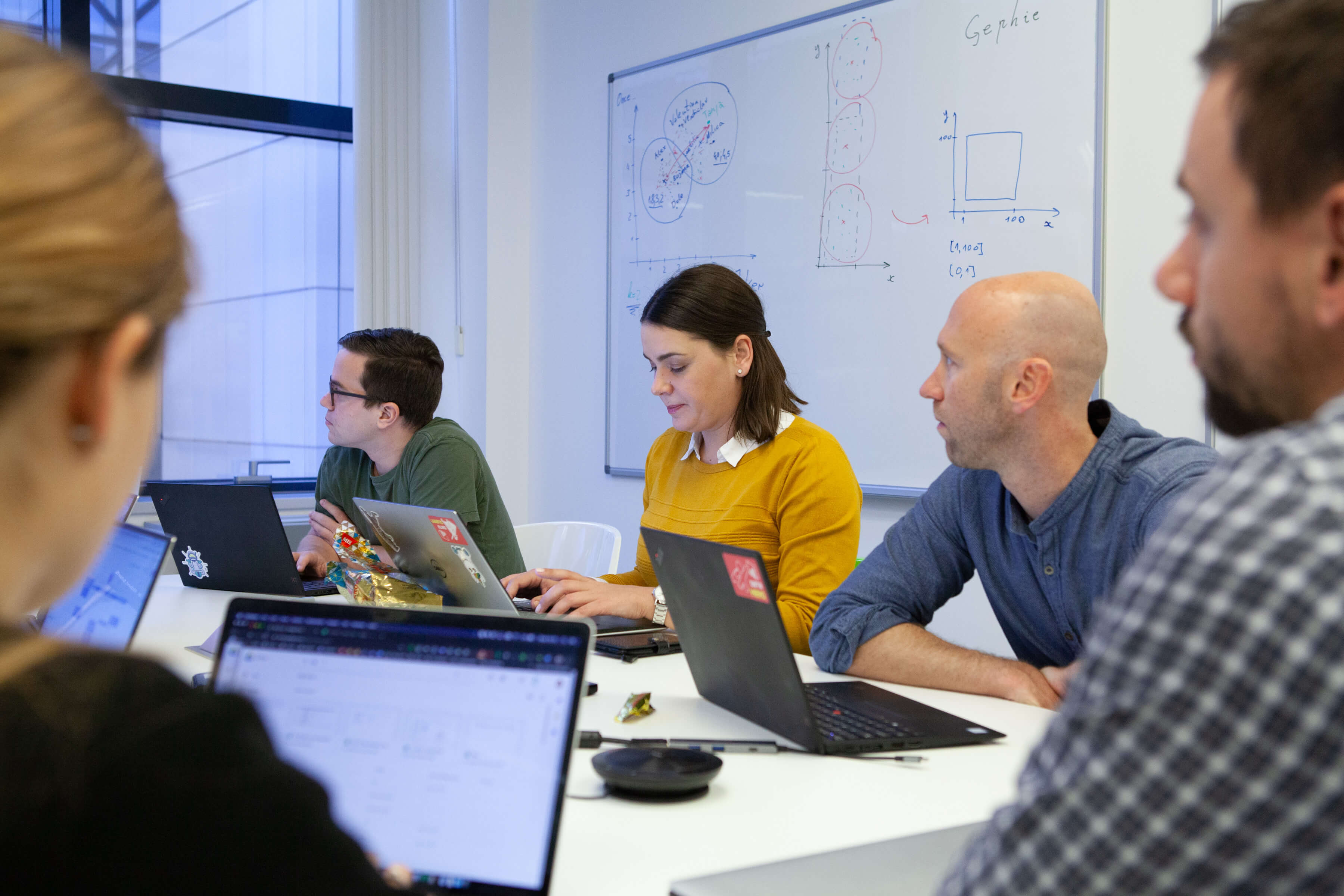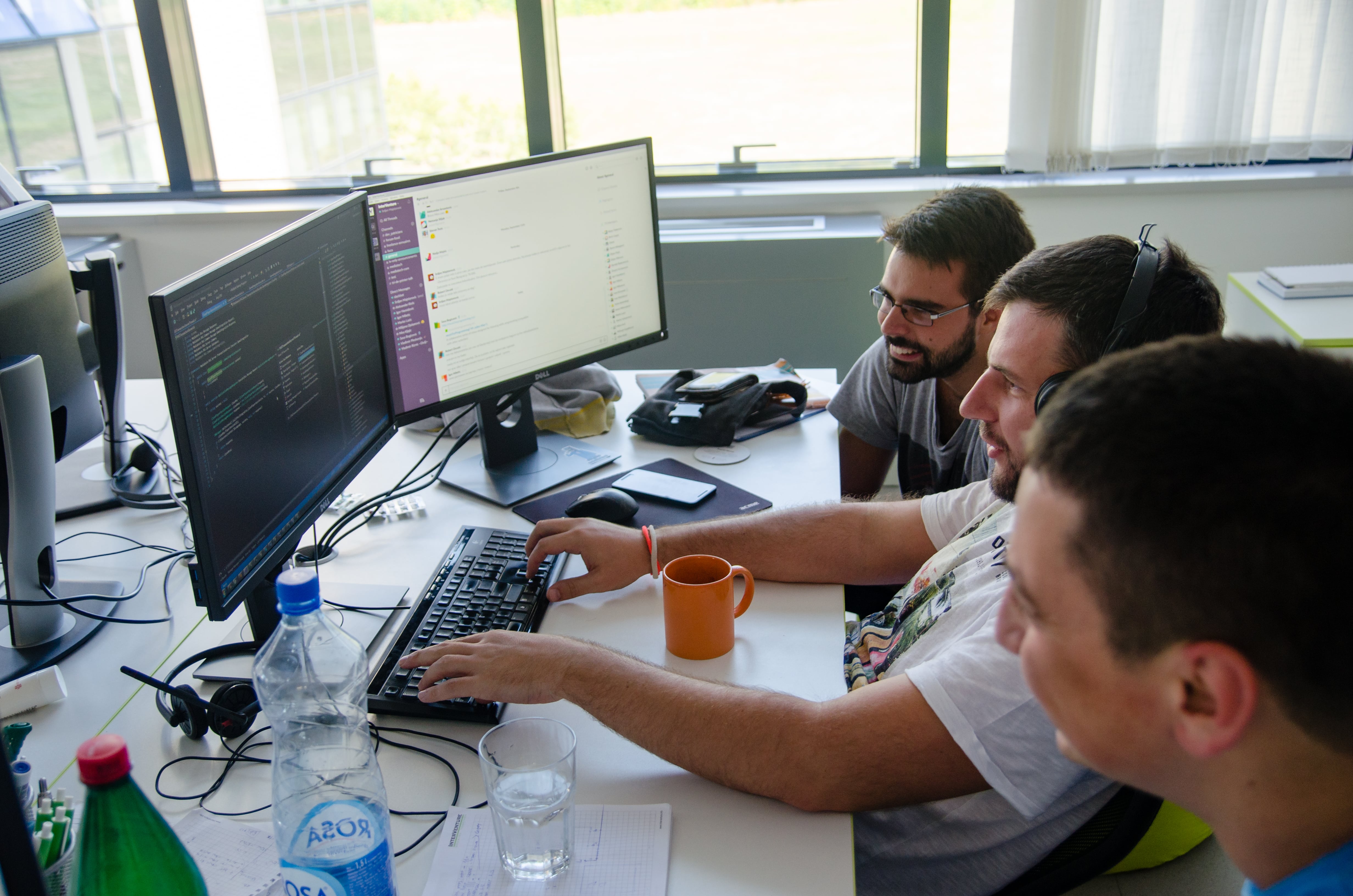Product engineering in the era of the global village
Posted by InterVenture on October 13, 2020Grab any anthropology book and you’ll read that humans are creatures that enjoy creating as much as they enjoy playing. Product engineering synthesizes both, we would say.
The idea of taking a systematic approach toward creating something out of nothing is not new for mankind. Maybe the most magnificent examples can be found in the Renaissance when the first pattern books and design drawings were made as instructions by craftsmen and architects.
Just imagine the great Leonardo Da Vinci creating one of his incredible, future-evoking machines without any type of blueprint. It would hardly work, would it?
When it comes to IT, product engineering refers to the creation of software products – from the moment the idea is conceived to the moment when the official launch happens. In today’s era of the global village, product engineering has a new face (a prettier one, we would say).
The traditional methods that implied live brainstorming and assembling the team under one roof have been pushed aside to make room for innovation.
Here’s what it’s all about.
Product engineering teams require primarily one thing
You could be a bit poetic and say that product engineering enables ideas to transition from inside people’s heads to external reality, thus allowing them to take a tangible form that users can utilize or interact with.
You could also explain product engineering as a carefully mapped process that involves multiple stakeholders working toward the same goal – making a certain product. Or you could keep it simple: product engineering is the journey of imagining, designing, and developing products.
Either way, you wouldn’t be wrong. So, what do these definitions have in common? They imply collective effort.

In IT, the success of any project is directly tied to the team you assemble. But here’s the catch: assembling the team is not just about finding qualified individuals. It’s about finding individuals who can do amazing work together.
If you watched ‘Moneyball’, you know what we’re talking about. At the core of the story, we’re looking at one scout’s iron will and courage to challenge conventional wisdom and use a different, yet still an evidence-based approach to building a winning team.
The key to team success? Balance.
The same goes for IT. When forming a product engineering team, it’s not about picking exquisite software engineers, ‘gluing’ them together, and then letting them do their thing. It’s not about who’s good on paper either. It is about carefully assessing individual strengths and contemplating who would be the perfect fit for the project. It’s also about finding a way to match these talents so that they, as a team, can thrive.
This is how innovation works – on the shoulders of talented people who are committed to creating something together.
Great product engineering requires a lot of pieces fall into place
There are many different ways to go about product engineering. At Facebook, product engineers work in small teams to create the biggest impact. At Amazon – software engineers are encouraged to take ownership, contribute with their own ideas, and think beyond coding.
Nevertheless, the goal is always the same: develop the product for which there is a real market need, and when you do so – make sure to keep it up and running.
The essential sides that participate in product engineering are the product manager, the design lead, and the tech lead. Of course, you may call these job positions differently and it’s also not rare that one person wears multiple hats. The point is in having all these bases covered.
The value and quality of the end product depend on how well you manage to hone skills and leverage both knowledge and unique perspectives of the above-mentioned three sides. Let that soak in.
The reason why so many companies don’t succeed to do something groundbreaking and innovative is directly related to underutilizing the members of their team, their ideas, and talents. When you box people in and let their formal job description limit their voice, you miss out on great opportunities.
Marty Cagan, the author of “Inspired: How to Create Tech Products Customers Love”, visually presented the process of creating the product in the following way:

While there is nothing wrong with the process per se, the way each phase is handled often sets the product for failure.
A different outlook on product engineering
So, what are companies doing wrong when it comes to product engineering exactly? More importantly, what could they be doing differently?
Before developers and engineers can start with their sprints, they have to know precisely what has been envisioned. There is a better way to do this, though – by including them earlier in the product engineering process. We would suggest including them in building the business case, or even earlier, during ideation. As Cagan wrote in his book:
Maybe the biggest missed opportunity is the fact that engineering gets brought in way too late. We say if you’re just using engineers to code, you’re only getting half their value. The little secret in product engineering is that engineers are typically the best single source of innovation; yet, they are not even invited to the party in this process.
Instead of treating software engineers as executors that act on requirements, companies can benefit from their ideas and a particular mixture of creativity and technical knowledge, which may lead to finding new ways of doing things.
Of course, not all software engineers are willing to step in as product engineers. Some of them prefer just writing code and they are impeccable at their work. Every person is an equally important piece of the puzzle.

Looking at real life cases, there could be no single product engineer at all. Instead, this role could be divided between the product manager and the tech lead. Thanks to their mutual efforts, the foundations of product engineering are set realistically so that they meet customer expectations, deadlines, and the available budget. They participate in the discovery process together.
Think of it like merging the business side and the technical side of product development into one so that everything from the architecture, infrastructure, and choice of programming language to features and functionalities are all well thought out.
But where do you find the right people for the job?
Global village = global talent pool at your fingertips
“The new electronic interdependence recreates the world in the image of a global village.”
Canadian philosopher and the pioneer of media theory Marshall McLuhan wrote this in his book of essays, “The Gutenberg Galaxy”. Can you believe this was in 1962? That’s almost sixty years ago!
McLuhan was focused on studying the implications of the new media of his time (i.e. radio and television), but he had a pretty good sense of where the world was going given the fact the World Wide Web appeared some 30 years later.
Indeed, thanks to technology, we are connected more than ever. Have you ever thought about how wild it is that you can communicate with a person from a different time zone – in real-time?
The Internet has fundamentally changed the way we connect, communicate, and work. The process of product engineering has improved miraculously thanks to distributed teams and the idea of introducing diversity and flexibility for making better software products.

Maybe you know exactly which gap you need to fill in within your product engineering team. Does this mean that the perfect match would be automatically disqualified if they don’t live in the country of your company’s headquarters? Yeah, we didn’t think so.
In fact, we at InterVenture are witnessing an increasing number of companies that are prioritizing talent over location, especially in product engineering. Collective wisdom is getting the recognition it deserves in this context because fresh perspectives combined with diverse experiences make solid roadmaps.
Product engineering isn’t easy, especially in terms of costs and planning. Are you struggling with assembling your dream team? We have just the thing.
At InterVenture, we developed The Own Team Model™ which is a 100% dedicated team service designed for long-term product development purposes. It takes just 8 weeks for us to recruit the right talented engineers and set up the entire operation for you. At the end of the process, you’ll have your own engineering hub in the Silicon Valley of the Balkans.
Want to hear more or learn about nearshoring?
Explore our partnership model or contact InterVenture today for additional information. Let’s grow together and build something amazing.